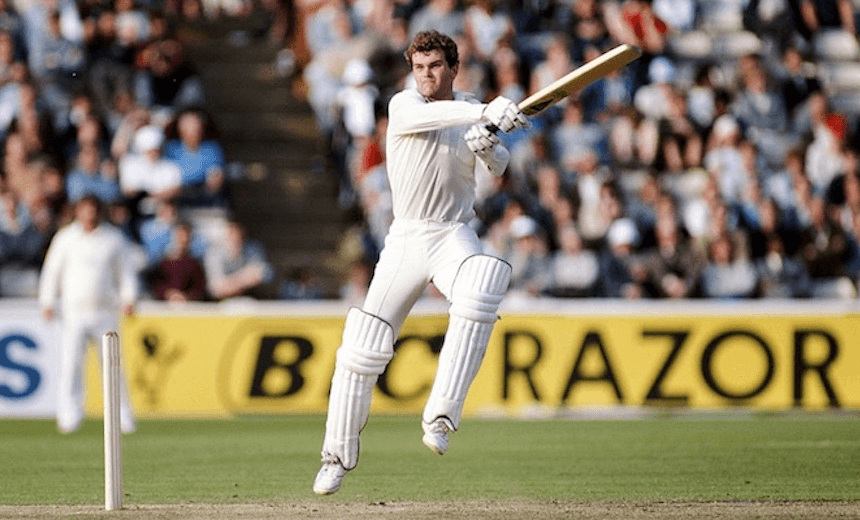You might have noticed an increase lately in the amount of news stories about half-naked men fighting in a cage. You might also have noticed one man in particular seems to get a bunch more air time than anyone else. Don Rowe explains just who he is, and why everyone is talking about him this week.
He’s blonde, Irish and shredded as all hell. He’s got a crowned gorilla tattooed on his chest, a tiger tattooed on his tummy and his last name separating the two in case you forgot who you were looking at. His name is Conor McGregor, he’s the featherweight champion of the UFC, and he’s fighting in Las Vegas this weekend.
Conor McGregor is the great European hope for mixed martial arts (read: cage fighting), a sport where it’s easier to list what you can’t do than what you can. Traditionally dominated by American wrestlers and Brazilian hard bastards, mixed martial arts has experienced a recent influx of quality European fighters, Conor McGregor leading the way.
A champion at both featherweight and lightweight (66 and 70 kilograms respectively) in the UK promotion Cage Warriors, McGregor entered the Ultimate Fighting Championship – universally acknowledged as the pinnacle promotion in mixed martial arts – in 2013.
His first opponent was the middling Marcus Brimage, a journeyman fighter without a significant win on his resumé. McGregor knocked him out in Sweden in just over a minute. Next, the Hawaiian Max Holloway. With a completely shredded anterior cruciate ligament (ACL), McGregor took the win over three hard rounds. It’d be the last time a McGregor fight reached the judges decision.
In July, 2014, the UFC held their first event in Ireland, headlined of course by Conor McGregor. His opponent was Diego Brandao, a Brazilian brawler with dynamite hands and a suspect gas tank. If Brandao had any chance at all, the theory went, it would be in the first round. McGregor knocked him stiff one minute before the bell ended round one.
In his post-fight interview, draped in the Irish flag, McGregor uttered the now infamous quote:
“We’re not here to take part, we’re here to take over.”
However impressive his in-cage performances, it was McGregor’s mouth which catapulted him directly to the top of the rankings and payscale. It also earned him the dual monikers of The Notorious and Mystic Mac, on account of his habit of predicting knockout victories with impressive accuracy.
Following the Brandao fight, McGregor knocked out four straight opponents, all within the first two rounds. His string of victories culminated in a record-breaking 13 second slaughter of reigning pound-for-pound great and featherweight champion José Aldo, a Brazilian Muay Thai specialist.
After becoming champion, McGregor wasn’t content to stick around at featherweight. Within a few weeks, McGregor signed to fight lightweight champion Rafael Dos Anjos at UFC 196.
But just ten days out from the fight, Dos Anjos broke his foot, leaving McGregor without an opponent and screwing himself out of millions of dollars in the process. It was nothing new to McGregor. “I can’t hold a grudge against him,” he said. “I wouldn’t want to fight me either.”
The UFC scrambled, desperate for a replacement fighter fit to headline an event built and marketed around a champion vs champion superfight. The opponent would need to be brash, capable of selling the fight, willing to engage with McGregor in promotional activities and, overall, not too likely to starch McGregor with one lucky punch, thus writing off his chances at challenging Dos Anjos on his eventual return.
Enter Nate Diaz.
One half of the most polarizing sibling duo in MMA, Nate Diaz won the fifth season of the UFC’s reality show The Ultimate Fighter in 2007, securing a contract with the UFC and $50,000. He’s since gone 13-8 in the UFC, fighting at lightweight and welterweight (77kg) against both former and future champions.
A resident of Stockton, California, Diaz is about as open a stoner as you get in professional sports. He has the body of a stoner too, perhaps one of the least physically impressive fighters in the promotion. Ironically, he also possesses some of the best cardio in the sport, regularly competing in triathlons and marathons around California. Where McGregor’s catchphrase is something like ‘Mystic Mac’, Nate Diaz can be summarised as ‘Stockton, motherfucker.’
He’s a shit-talking hard bastard who may be one of the only fighters immune to McGregor’s legendary psychological warfare. He’s also 8cm taller with a 5cm reach advantage and experience fighting at a weight division 11kg heavier than the one McGregor rules.
For hardcore fans of the sport, this is the fight to make. The first press conference alone did better numbers than the PPV rates for flyweight champion and pound-for-pound great Demetrious Johnson, and this morning shit very nearly hit the fan just two days out from the fight when McGregor punched Diaz in the hand during a staredown.
Whether or not Diaz can win a five round fight against McGregor on ten days notice, or even after a full eight week training camp, is debatable. But one thing is absolutely certain, if you’ve got any interest in fisticuffs at all, this is a fight you cannot miss.
Oh yea, and in the co-main event, the girl who did this to Ronda Rousey defends her belt.
UFC 196 screens this Sunday from 2pm on Sky Arena and at every good pub.





